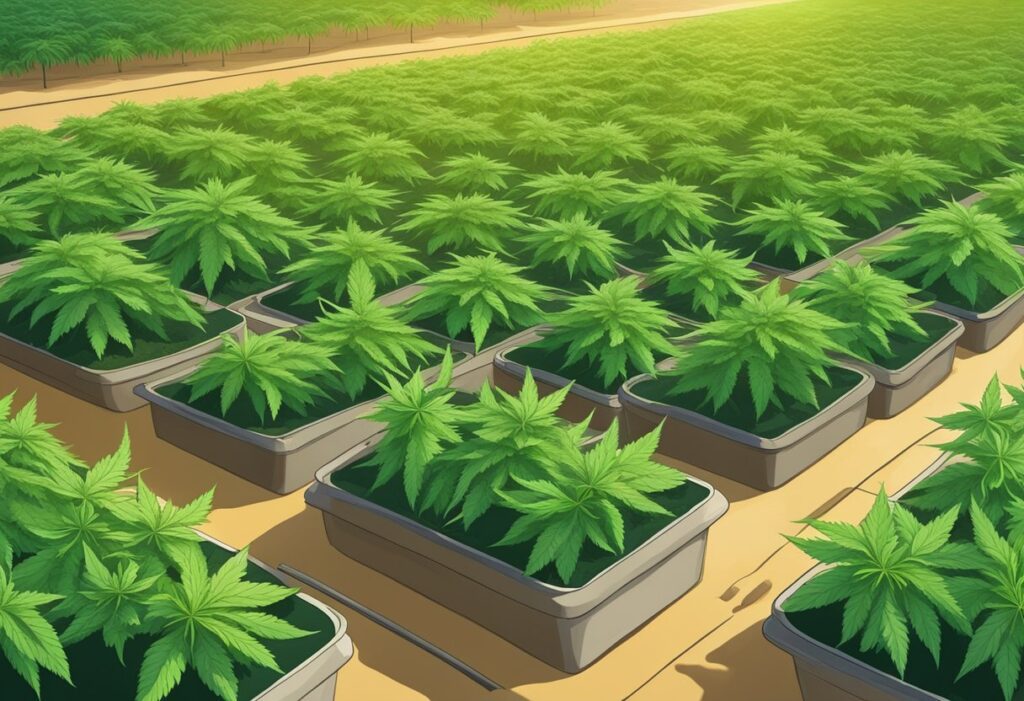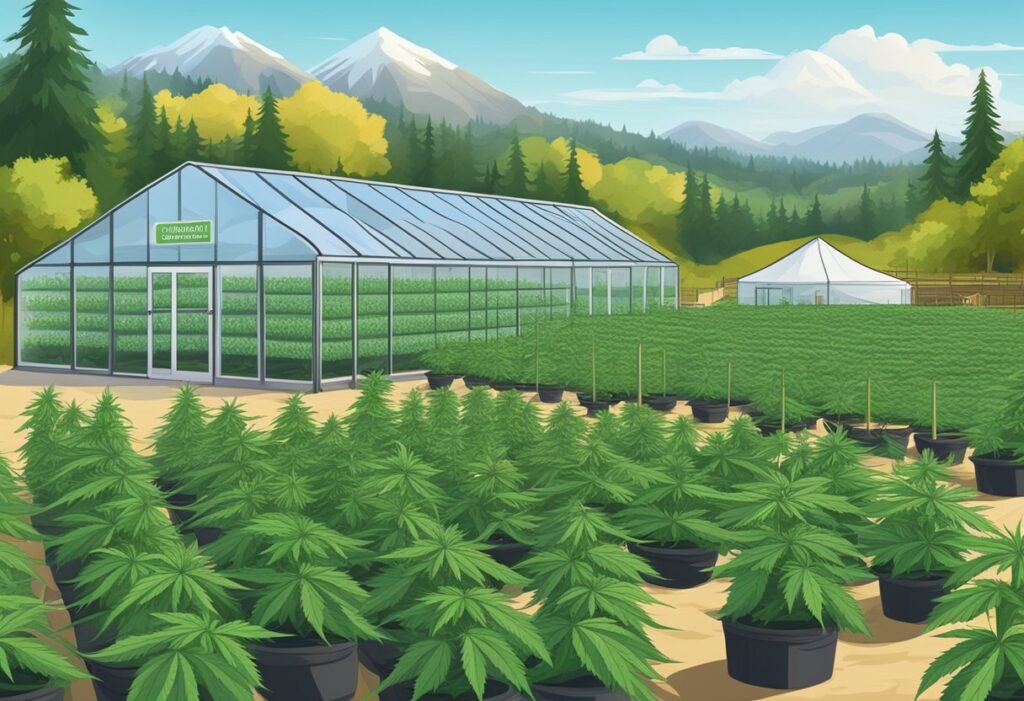
Mastering outdoor marijuana cultivation in Canada requires a solid understanding of several key elements that are specific to the local environment and legal landscape. Your knowledge in selecting the right location, understanding the climate impacts, and choosing the appropriate strains will help in achieving a bountiful harvest.
When embarking on outdoor cannabis cultivation in Canada, your primary focus should be on selecting the ideal location. Sunlight is a critical factor, so finding a spot that offers ample daylight is pivotal. Ensure the chosen site has good drainage to prevent waterlogged roots, which can lead to plant disease. Additionally, the site should be discreet and secure, in compliance with Canadian laws regarding cannabis cultivation.
Canada’s diverse climate regions greatly affect outdoor cannabis growing. You must consider your region’s unique conditions including temperature ranges, the likelihood of extreme weather events, and humidity levels. Cannabis plants are generally resilient, but unexpected frost or prolonged dampness can be detrimental. Being familiar with your local Canadian climate and adapting your cultivation schedule can mitigate these risks.
Selecting cannabis strains that are well-suited to the outdoor conditions of your region in Canada is crucial. Look for strains known for their hardiness and ability to withstand the particular environmental stresses they’ll encounter. Licensed producers often offer a range of seeds optimized for the Canadian climate and these can be a valuable resource.
| Strain Name | Ideal Climate | THC Range | Flowering Time |
|---|---|---|---|
| Blue Dream | Moderate | High | 9-10 weeks |
| Northern Lights | Cool | Medium | 7-8 weeks |
Your soil is the foundation of plant health. Begin with soil tests to determine pH levels and nutrient content. For cannabis, a pH level around 6–6.5 is ideal. Enhance your soil with the right fertilizer, composing a nutrient schedule that aligns with the growth stages of the plant. Organic matter can improve soil quality, but ensure the soil is prepared well in advance to stabilize before planting.
Remember, the legalization of cannabis in Canada allows you to cultivate marijuana outdoors but always remain informed of the current legal guidelines in your province or territory. Proper due diligence in these fundamental areas lays the groundwork for successful outdoor cannabis cultivation.

Mastering outdoor marijuana cultivation in Canada requires a combination of precise techniques and timely oversight to maximize your yield. Understanding the key stages of cannabis growth and implementing proper care are essential for any grower looking to optimize their harvest.
Your cannabis plant’s life begins with germination, and ensuring a robust start is critical for strong development. It’s vital to maintain consistent moisture and warmth at this stage. Use a quality starter mix and keep the soil damp but not saturated to avoid seedling rot. Seedling care demands gentle handling; when your seedlings emerge, provide them with 16-18 hours of light to encourage sturdy growth.
Throughout the vegetative and flowering stages, monitoring is crucial for recognizing your cannabis plant’s nutrient needs and making necessary adjustments. During the vegetative stage, aim for well-aerated soil rich with nitrogen-based fertilizers to support leaf and stem growth. As your plants enter the flowering stage, switch to phosphorus and potassium-heavy fertilizers to encourage robust bud development. Outdoor growing allows for natural sunlight, but be vigilant about temperature fluctuations and provide shade or cooling as needed to maintain temperatures between 21-29°C during the day and 10-21°C at night.
The right moment to harvest your cannabis is key to achieving maximum potency and yield. Experienced growers look for the trichomes on the buds to turn from clear to a milky white or amber color. After cutting your plants, cure the buds by hanging them upside down in a controlled environment with temperatures around 15-22°C and humidity levels between 45-55%. Curing can take several weeks, but this step is essential for enhancing flavor and potency.
By adhering to these specific techniques, you can ensure that your outdoor cannabis cultivation is both cost-effective and successful, keeping in line with Health Canada’s regulations and benchmarks for marijuana growers.

As you venture into outdoor marijuana cultivation in Canada, understanding the regulatory landscape and market dynamics is crucial. Your success hinges on adherence to Health Canada’s stringent regulations and savvy navigation of the competitive cannabis market.
Health Canada oversees cannabis cultivation licenses, ensuring that your outdoor cannabis operations meet the required safety and quality standards. To maintain compliance, you must:
Remember that while cannabis seeds and plants can be sold legally, Health Canada presents detailed guidelines on cannabis products, including fresh, dried, and edibles.
The business landscape for outdoor marijuana cultivation in Canada features varied elements that influence profitability and viability:
Staying informed with cannabis benchmarks and keeping abreast of the evolving market will support your outdoor cannabis farm’s business decisions and help maintain a competitive edge.
For successful flowering in Ontario, your cannabis plants should be exposed to temperatures between 21-29°C during the day and 10-21°C at night. Humidity should be moderate to prevent mold and to foster robust growth.
Using techniques such as low-stress training (LST), topping, or introducing beneficial microbes can significantly enhance both the yield and potency of your outdoor cannabis plants by improving light exposure and increasing the plant’s overall health.
Cultivating more marijuana plants than the law permits in Canada can lead to legal consequences, including fines or imprisonment. Ensure you understand and adhere to the specific limits for personal and licensed cultivation.
To set up an efficient outdoor grow, start by choosing a location with ample sunlight, good air circulation, and access to water. Invest in high-quality soils and fertilizers, while also implementing pest and weed management strategies.
Growing cannabis outdoors in Canada’s winter is challenging due to the extreme cold and lack of sufficient sunlight. For winter cultivation, utilize greenhouses equipped with heating systems and supplemental lighting to maintain appropriate growing conditions.
We ship and deliver world wide via USPS and various couriers.
We offer a wide range of secure and anonymous online payment options.
We care about you, our customer. Please contact us with any questions or concerns.
Find out more about the benefits of being a loyal and regular customer.
WE ARE EVERY GROWERS ONE STOP SHOP TO ACQUIRE PREMIUM CANNABIS SEEDS FOR SALE IN THE USA, CANADA AND AUSTRALIA

Farmers Lab Seeds 2024, | All Right Reserved
Seeds are sold as novelty items, souvenirs, and collectibles. They contain 0% THC. We encourage our customers to check the legislation in their Country, State, Province, and Municipality prior to purchasing items from our store. We do not provide growing information.
All seeds are sold as hemp, and lab tested under 0.3% THC. This product is not for use by or sale to persons under the age of 21. This product should be used only as directed on the label. It should not be used if you are pregnant or nursing. Consult with a physician before use if you have a serious medical condition or use prescription medications. A Doctor’s advice should be sought before using this and any supplemental dietary product. All trademarks and copyrights are property of their respective owners and are not affiliated with nor do they endorse this product.
These statements have not been evaluated by the FDA. This product is not intended to diagnose, treat, cure or prevent any disease. Individual weight loss results will vary. By using this site, you agree to follow the Privacy Policy and all Terms & Conditions printed on this site. Void Where Prohibited by Law.